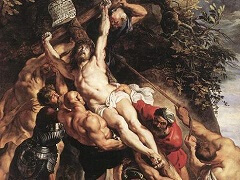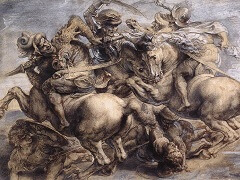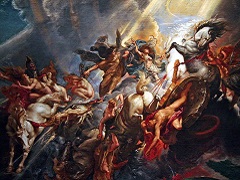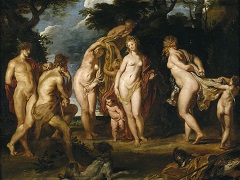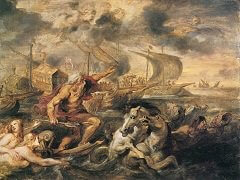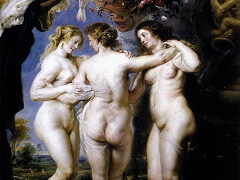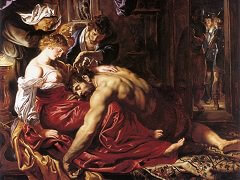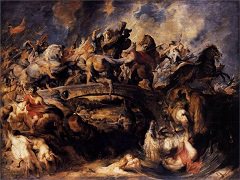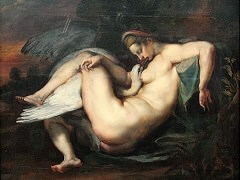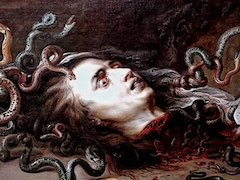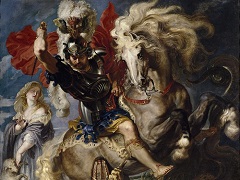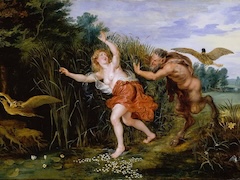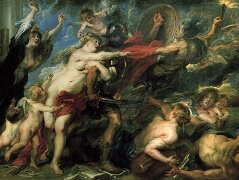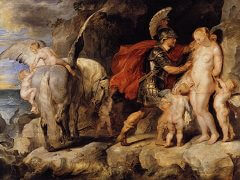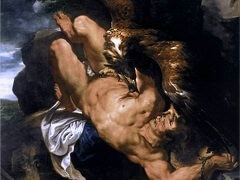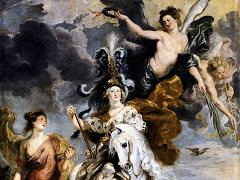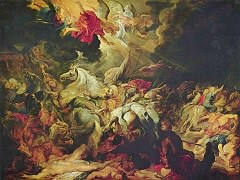Descent from the Cross, 1612 by Peter Paul Rubens
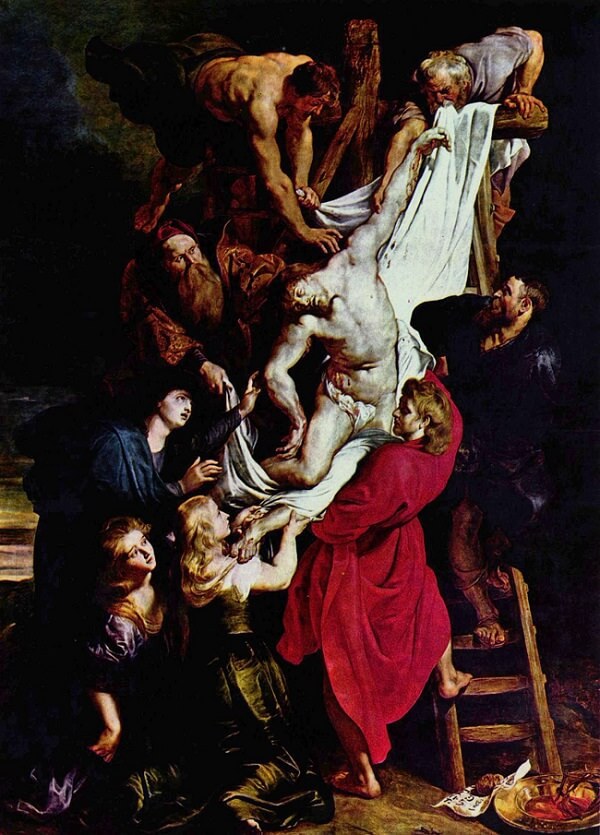
After the termination of the Calvinist regime in Antwerp in 1585, the city's churches were gradually decorated once again with works of art. The process continued and intensified in the early part of the 17th century, when the Southern Netherlands enjoyed a period of stability and prosperity thanks to the peace policies pursued by the Archdukes Albert and Isabella. Art and artists were major beneficiaries. Antwerp was a wealthy city, whose churches were decorated with unusual splendour: Catholic worship had to be especially glorious in this place where the Protestants head recently held sway.
In 1611, the Arquebusiers - Antwerp's civic guard - commissioned a Descent from the Cross by their illustrious townsman Rubens for their altar in the cathedral. The dean of the guild at that time was Burgomaster Nicolaas Rockox, who appear in the painting. The Descent from the Cross is the second of Rubens's great altarpieces for the Antwerp Cathedral. It shows the Visitation, and the Presentation of the Temple on either side of the Descent from the Cross. (The first triptych of Raising of the Cross was executed in 1611-12.) His rich painterly Baroque technique incorporated both elements of Venetian design and also the composition and lighting of the Roman period of Caravaggio. But the result is purely Flemish.
Although at first sight the themes presented in the triptych seem extremely wide-ranging, they are actually linked, for St Christopher was the Arquebusiers' patron saint. When the triptych was closed, all that worshippers could see was this scene from the legend of St Christopher, whose Greek name 'Christophorus' means 'Christ-bearer'. This fact forms the key to the entire painting, in which the friends and holy women in the centre panel, and Mary and Simeon in the wings are also 'Christ-bearers'.

